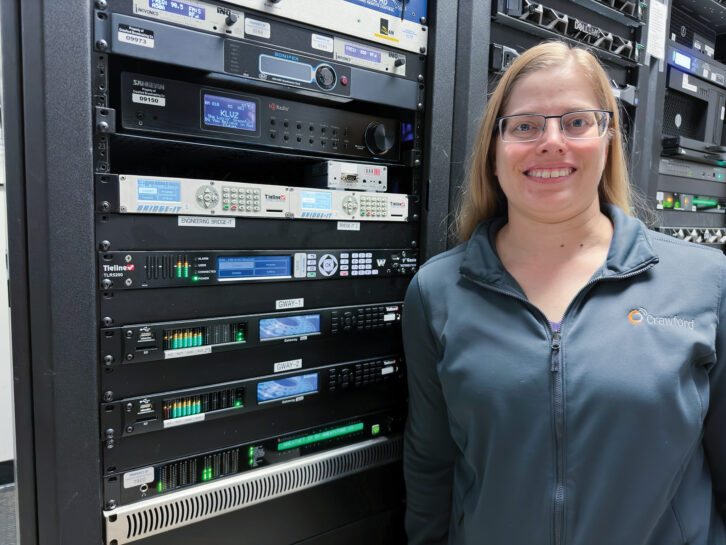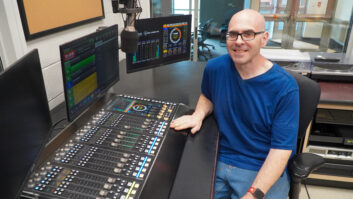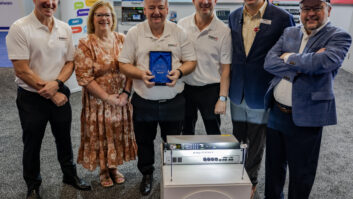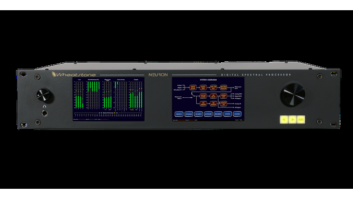Radio World Buyer’s Guide articles are intended to help readers understand why their colleagues chose particular products to solve various technical situations. This month’s articles focus on codecs and STL systems.
Thinking about how remote broadcasts were done when she started as a board op in 2002, Amanda Hopp, CBRE, says it almost doesn’t seem real.
“Once a venue was selected, then the process of getting some sort of POTS line brought in began, followed by making sure there was an engineer to haul the gear, set it up, run the show, break down and haul the gear back out.”
Hopp, now the chief engineer of Crawford Broadcasting Denver, recalls that it was time-consuming. If the weather was bad and a host could not make it into the studio for the show, it was either done over the phone, which sounded bad, or not done at all.
“Then came Tieline’s Bridge-IT. We migrated over to this unit in 2013. This, along with their iPhone adapter, changed everything.”

She said the host could easily do the show over WiFi or cellular data with their phone. With the purchase of some external equipment, a host could set up a home studio or be in the field and have guests join them.
“In Denver, several of our hosts have purchased their own Bridge-IT codecs and created for themselves a setup to allow them to broadcast from anywhere without the need for an engineer or a POTS line.”
The year 2014 brought the Tieline Genie Distribution codec. Crawford needed a way to send several of its shows to various markets.
“Denver had a Wheatnet-enabled ‘Disto’ and the other markets had Bridge-ITs. We were able to use a scheduler in our Wheatstone TDM system to set the system up to automatically connect and disconnect from the markets at specific times. Once again, this was a gamechanger. This worked great for us for many years.”
In 2022, after having trouble for years with studio-transmitter audio transport equipment, Hopp said the team wanted to make a change. “In this day and age, less is more. Who doesn’t like having less equipment to do certain things?”
After looking at the options, they chose Tieline’s new Gateway units paired with Bridge-IT XTRAs.
“The Gateway 8s would be perfect for our studio, allowing us to send the audio to eight locations, and we could easily integrate it with our Wheatnet system. We purchased two units, one as a main, the other as a backup, and we purchased a Gateway 4 for the KLZ transmitter site, and Bridge-IT XTRAs for the other locations.”
KLZ is a unique setup in that is where Crawford receives its satellite shows. It also has a second station co-located at the site.
“This would allow us to send multiple feeds to one unit to feed the two separate stations and to send the satellite audio back to the studio. All this works over our LAN, which connects all our transmitter sites to the studios using Cambium Part 101 microwave links.”
This has worked well for a year now. “We find that the Music Plus algorithm plays well with Xperi’s HDC codec, and we love the forward error correction, which helps us ride through the occasional dropped packets. The audio sounds great.”
In recent months, Hopp said, they have begun monitoring their connections using SNMP.
“If a connection is dropped, the SNMP monitor blows my phone up so I am aware of it. Once in a great while, we’ll get a rain squall line right down one of the microwave paths that will cause a deep fade, and I am alerted when that happens and a connection is dropped. As soon as the path comes back up, the Gateway connection is automatically restored; it will keep trying until the cows come home.”
Meanwhile they still use their Bridge-IT codecs for remote broadcasts, Hopp added, citing the ease of use for non-technical hosts.
“We see Tieline remaining as a key part of our broadcast infrastructure,” she said, citing its products’ reliability and readily available tech support. “Wheatnet and other AoIP integration is a huge asset, as are the many available algorithms and data rates. Being able to connect point-to-point or point-to-multipoint is another great feature, one that makes multiple site (such as main/offsite-aux or main/booster) operation easy. It’s hard to imagine a better, more flexible and efficient means of IP audio transport.”







